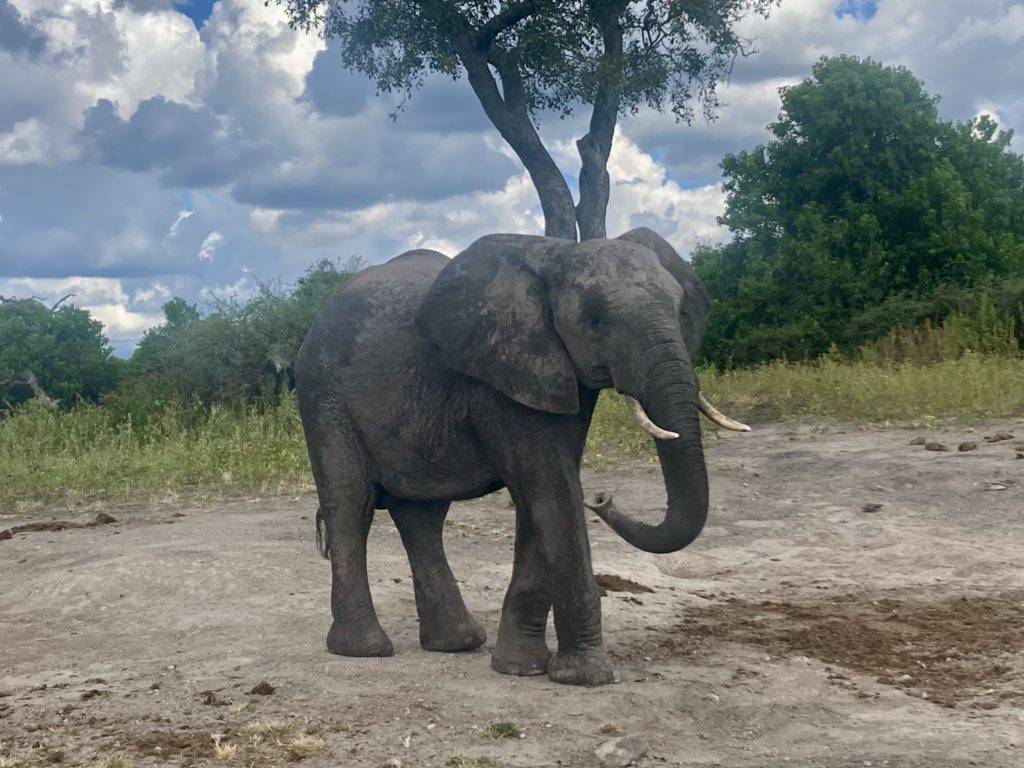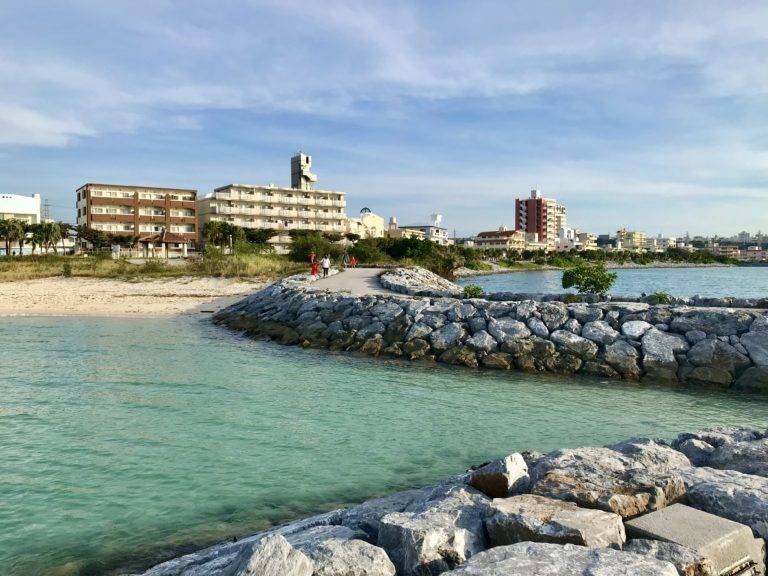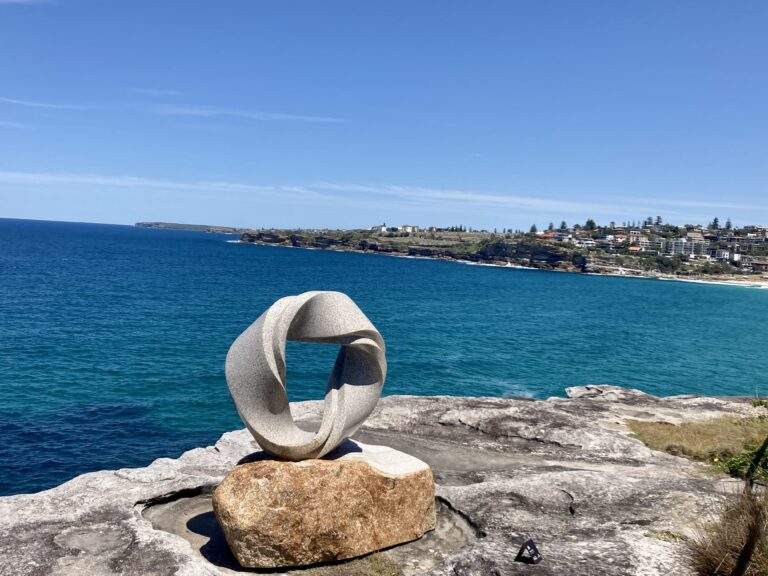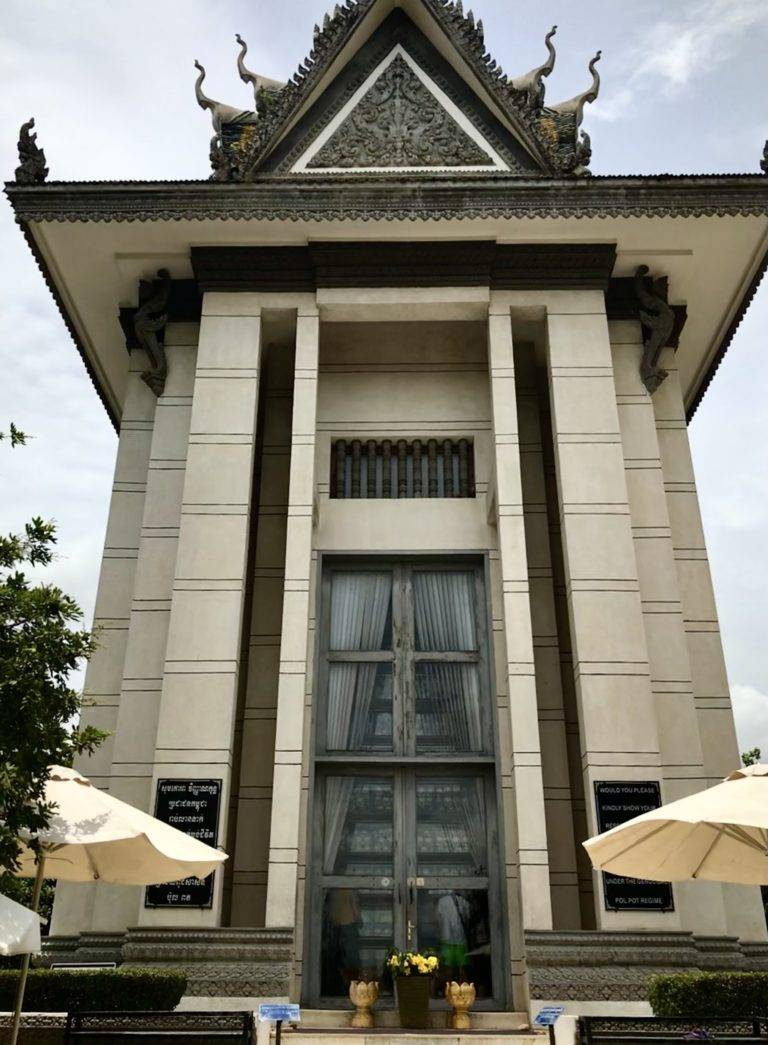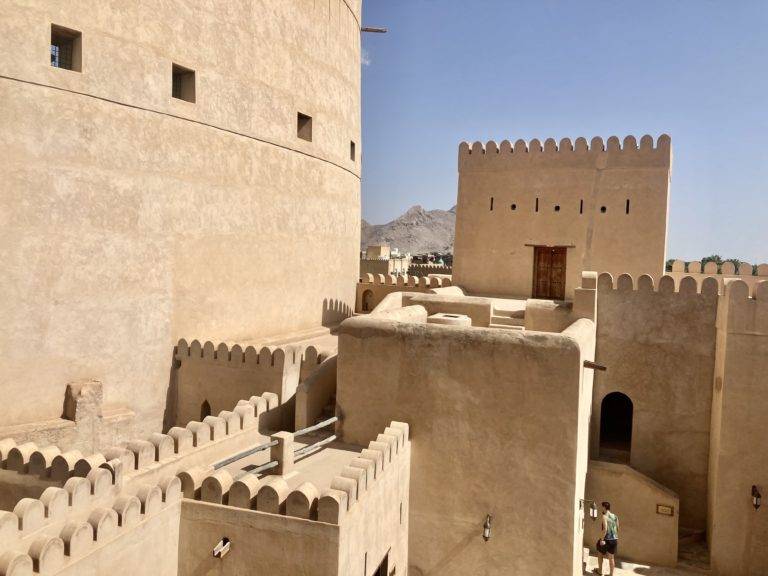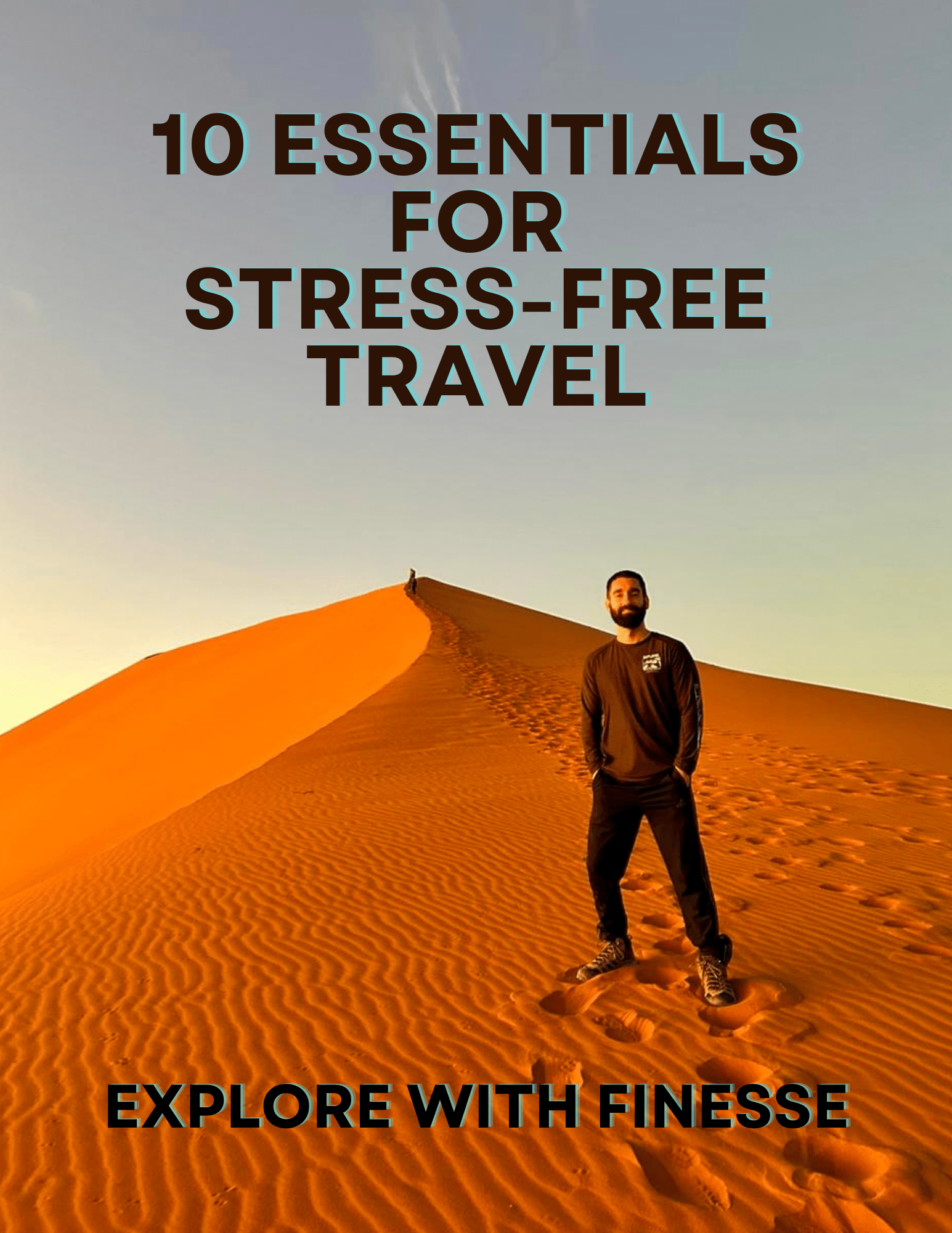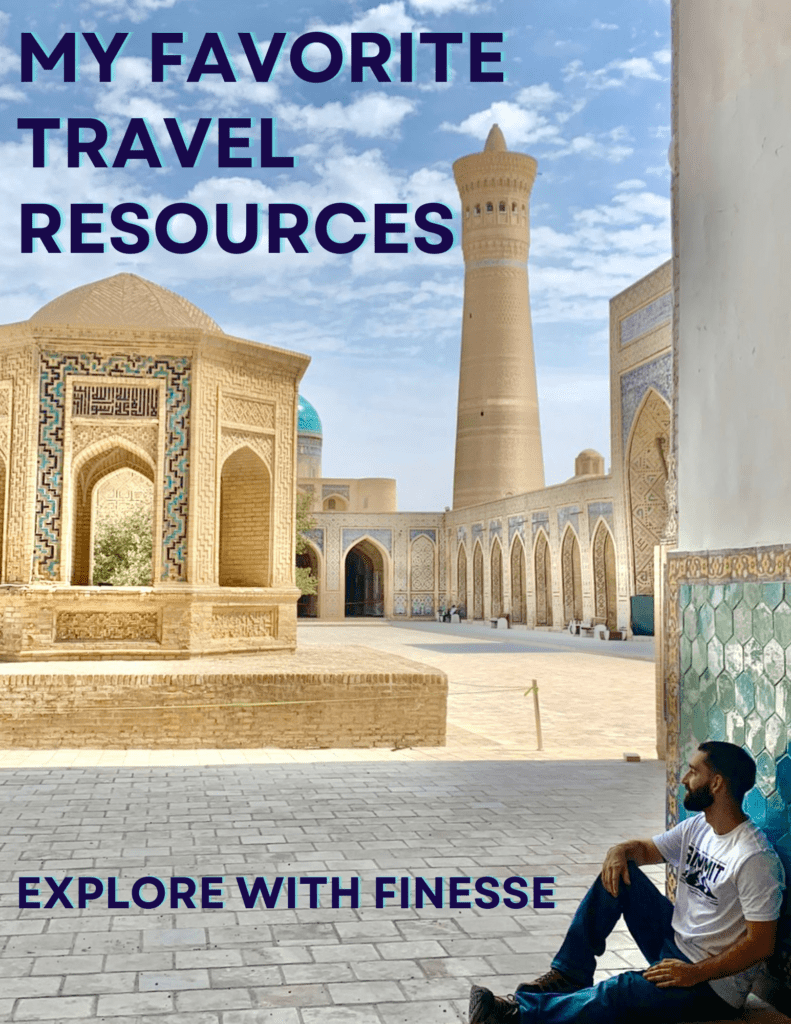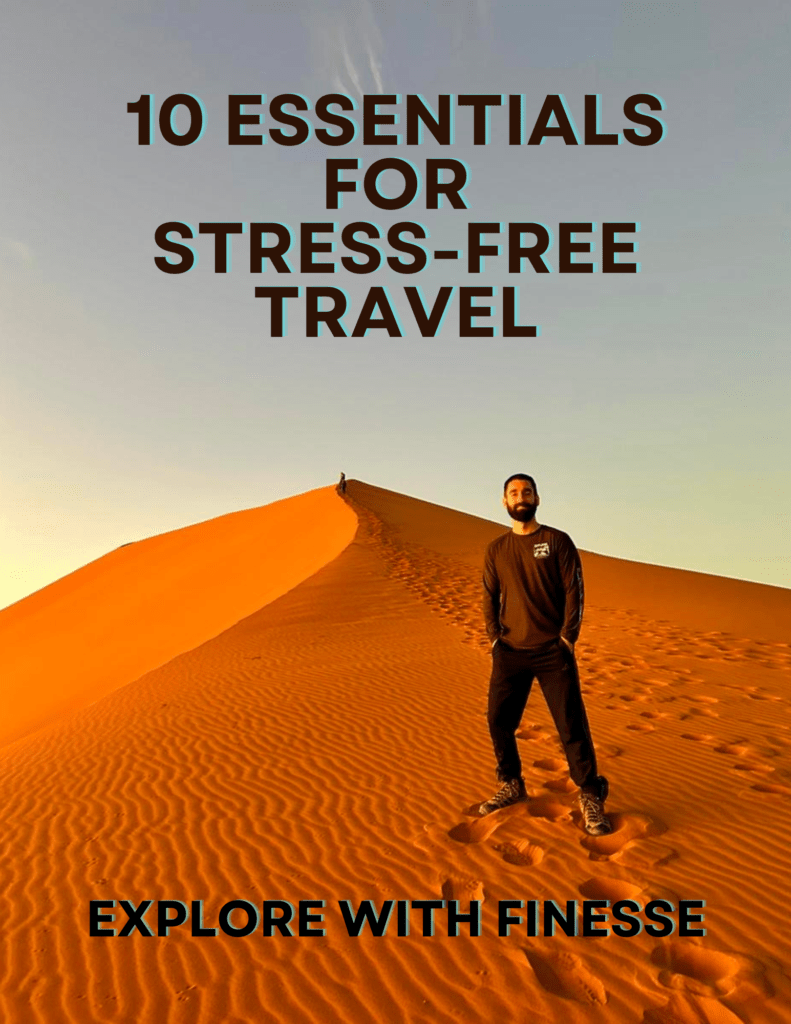Get Exclusive Access to My Top 10 International Travel Tips - Subscribe Now!
Chobe National Park in Botswana is a unique destination that offers unforgettable experiences for those who love nature and wildlife. This park is located in the north of the country, near the borders of Namibia, Zimbabwe, and Zambia. It is one of the largest national parks in Africa, covering over 11,000 square kilometers! It is home to a wide variety of animals, including elephants, lions, giraffes, hippos, and crocodiles.
If you are planning a trip to Chobe National Park, here is what you need to know:
Table of Contents
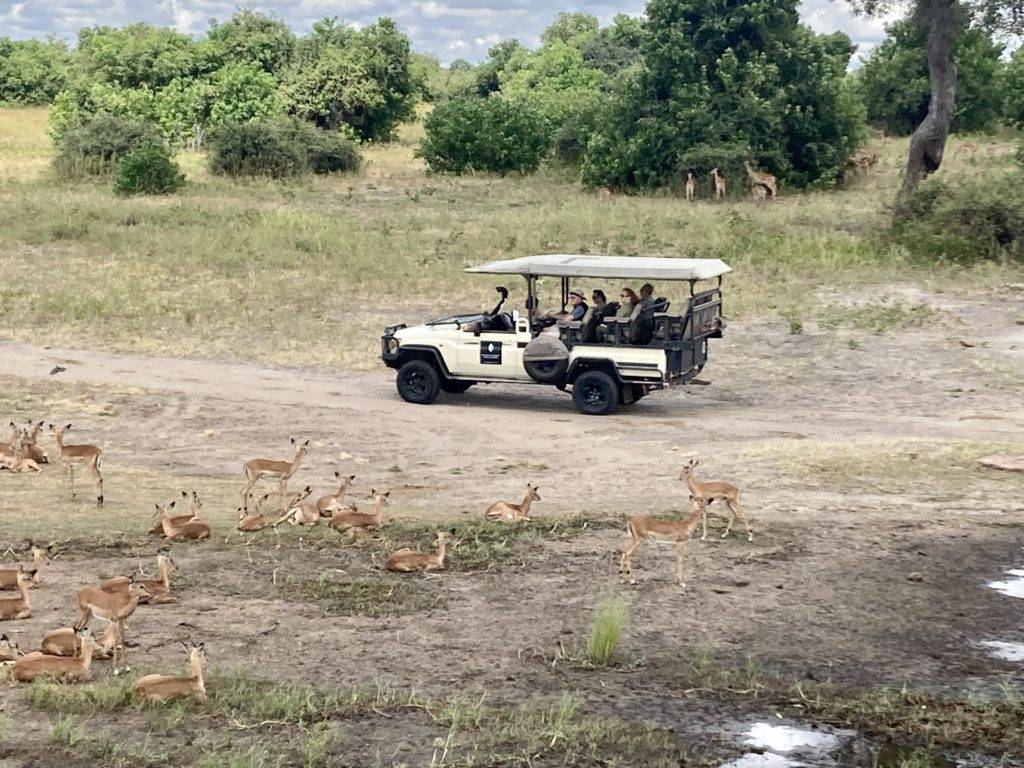
Where is Chobe National Park?
Why is Chobe National Park Worth Visiting?
Chobe National Park is one of the most famous game reserves in Africa due to its large size, diversity of animals, and different safari options.
Animals in Chobe National Park
Chobe National Park boasts a huge variety of wildlife, including the largest concentration of elephants in Africa, estimated to be over 50,000 individuals. Visitors to Chobe National Park can witness large herds of elephants bathing and playing in the Chobe River, which runs through the park.
In addition to elephants, the park is also home to lions, leopards, hyenas, rhinos, cheetahs, buffaloes, giraffes, zebras, and many species of antelopes. Bird lovers will be delighted with the over 450 species of birds that can be found in the park, including very colorful species such as the African Fish Eagle and the Lilac-breasted Roller.
Chobe National Park experience
Chobe National Park offers a unique safari experience, with opportunities for game drives, boat safaris, and even walking safaris. The park is also situated near the borders of Namibia, Zimbabwe, and Zambia, making it a convenient stop for travelers exploring southern Africa. During my stay in Chobe, I was lucky enough to see crocodiles, elephants, giraffes, hippos, kudu, impalas, water buffalo, baboons, and more! The amount of large animals that I saw in Chobe National Park is comparable to Ngorongoro Crater.

Boat Safari
Chobe River
The Chobe River is a vital source of water for wildlife in the park, making it an excellent location for animal viewing. It serves as a natural border between nearby countries, and provides an excellent opportunity for a boat safari.
Boat Safari
Doing a boat safari along the Chobe River is a memorable experience and one of the highlights of my trip to Botswana. The Chobe River, which acts as the border between Botswana and Namibia, is home to a wide variety of animals. You will be able to see hippos, crocodiles, and elephants in the water, as well as dozens of different animals that come down to the river to drink.
The boats used for safaris are specially designed and equipped for wildlife viewing. They are spacious, with comfortable seating and a roof to protect you from the sun. Certain boats allow you to climb onto the roof for an even better view of the area. The boats’ low sides provide an unobstructed view of the riverbanks and animals.
Boat safaris are led by experienced and knowledgeable guides who will share their expertise on the river’s wildlife and ecosystem. My guide discussed the history of the Chobe River, including past border disputes between the two countries, and was able to give us interesting facts about each animal we encountered. They will also ensure your safety and answer any questions you may have.

Game Drive
I participated in a game drive at around noon, following the boat safari. The wildlife is very active around this time, until the hottest time of the day, around 3 or 4 pm.
Wildlife at Chobe
The diversity of wildlife that we saw was impressive, especially near the banks of the Chobe River! There were large groups of impalas, often at least 100 impalas per herd! Baboons were frequently found alongside them, with the adults grooming each other and children playing nearby.
Elephants were a common sight, either traveling in herds or solitary, during our excursion. It was interesting to see them wading into the river to eat and cool down. They would rip the grass out with their trunks, and then swing them back and forth to get the mud off of the roots before eating it. It was a very interesting sight to behold.
Advice for Game Drive
These game drives are conducted in open safari vehicles, giving you a 360 degree view of the area. Make sure to bring sunscreen, a hat, and sunglasses to protect you while you are admiring the wildlife and scenery!
While you are able to drive around the park on your own, I recommend participating in a tour with an experienced guide. Not only are they experts at tracking animals, but they also communicate with other people around the park. That way, if a rare animal is spotted, the guides will immediately drive you to that location to try to find it.
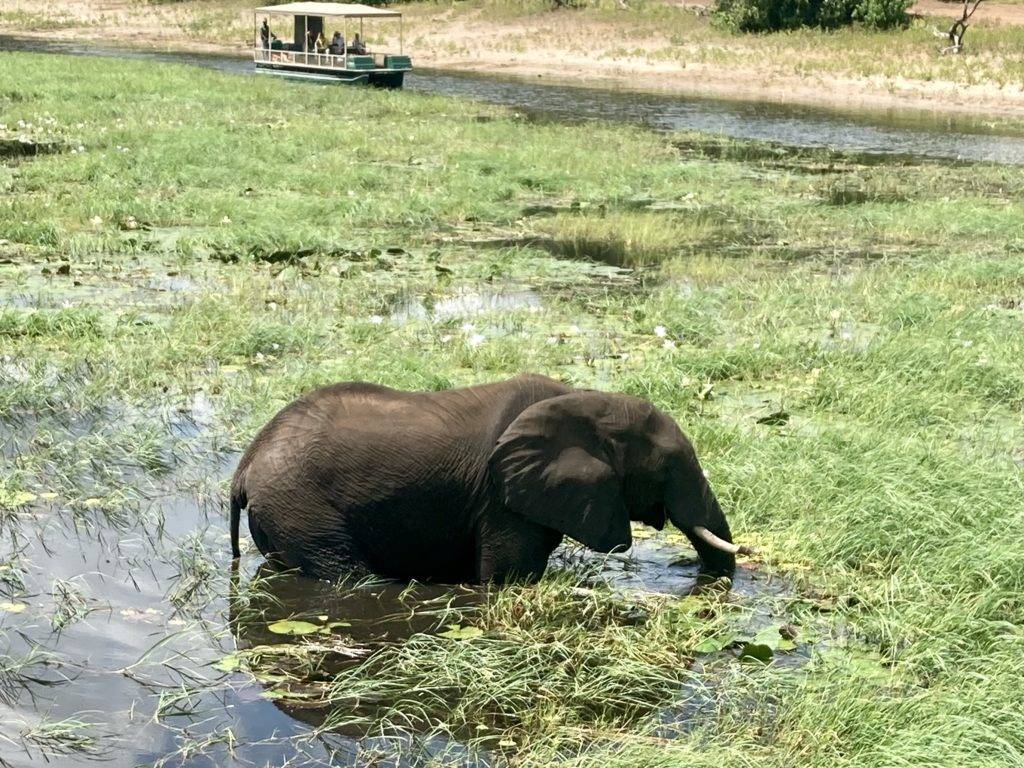
How to Get To Chobe National Park
Getting to Chobe National Park is relatively easy, with a few options to choose from.
By Plane
If you’re flying to Chobe National Park, the closest international airport is located in Kasane. From there, you can take a taxi or shuttle to your accommodation within the park. Alternatively, you can hire a tour that will pick you up from the airport.
From Livingstone or Victoria Falls
Many visitors to Chobe National Park travel from nearby towns, such as Victoria Falls or Livingstone. There are several tours that will take you from these cities to Chobe National Park for a day trip or up to a week. I participated in a safari with Kalahari Tours, and I was very happy with the experience. They arranged the transportation to and from Chobe, including the border crossing, as well as the boat safari and game drive.
Just make sure to check the border requirements for each country before setting off.
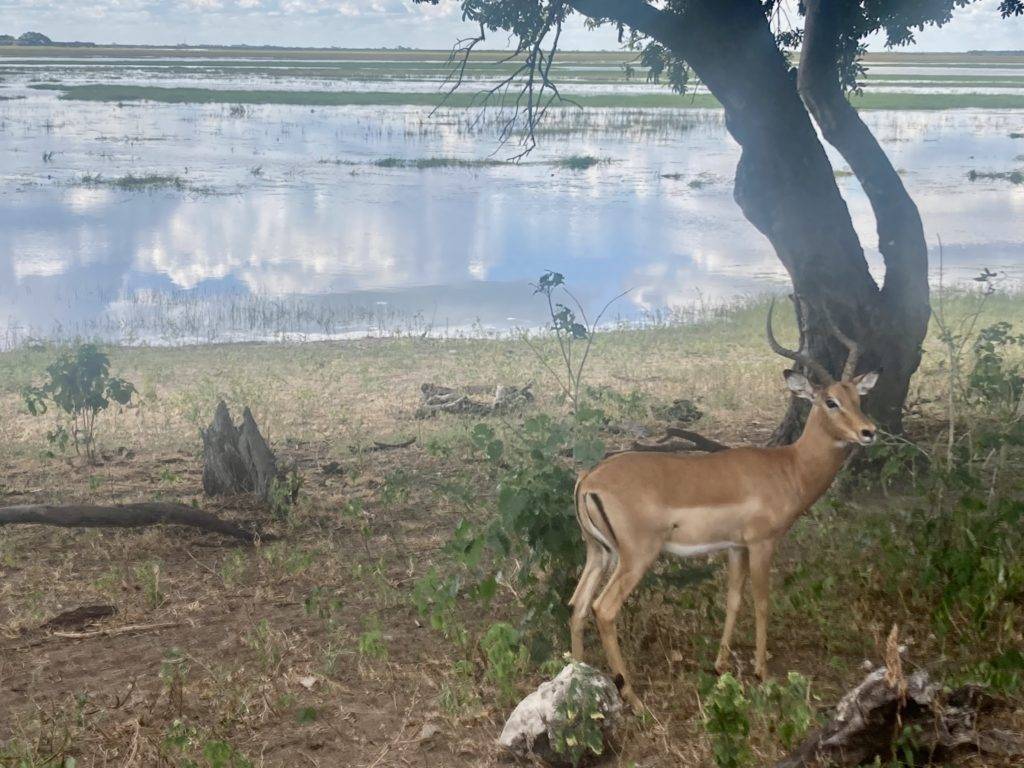
Tips for Visiting
Before your safari trip to Chobe National Park, here are 5 tips to ensure your visit goes smoothly
1. Choose the Right Time to Visit
The best time to visit Chobe National Park is during the dry season (May to October) when the animals congregate around the water sources. However, this is also peak tourist season, so book early. If you prefer fewer crowds and more affordable prices, consider visiting during the rainy season (November to April). I visited Chobe National Park in March, and was lucky enough to experience perfect weather. There were also not many tourists there. Sometimes, you just get lucky.
2. Bring the right gear
It gets bright here, especially near the river, so bring sunglasses and sunscreen. The evenings get chilly, especially during the dry season, so bring warm clothes. One thing I wish I had that I didn’t was binoculars. You never know when a lion or water buffalo will appear in the distance, so you want to be able to look at them while you have the chance!
3. Plan ahead and book in advance
Chobe National Park is a popular destination, and availability for lodging and safari tours can fill up quickly. Make sure to book your accommodations and safari tours well in advance to ensure you have the best possible experience.
4. Booking the safari from Botswana is much cheaper
Going on a safari in Chobe National Park is a popular activity for many travelers in Livingstone, Zambia who come to visit Victoria Falls. While there are many tours that will take you right across the nearby border to Botswana, you can save hundreds of dollars by traveling to Botswana and booking the safari from there! This may be a great option for budget travelers who wish to spend multiple days in Chobe National Park.
5. Bring insect repellent
Mosquitoes and other insects can be prevalent in Botswana, especially during the rainy season. While you are driving, you will be fine. But when your safari truck stops so you can look at animals, you’ll be surprised at how quickly bugs will swarm on you. Bring insect repellent to protect yourself from bites and reduce the risk of insect-borne diseases like malaria and dengue fever.

